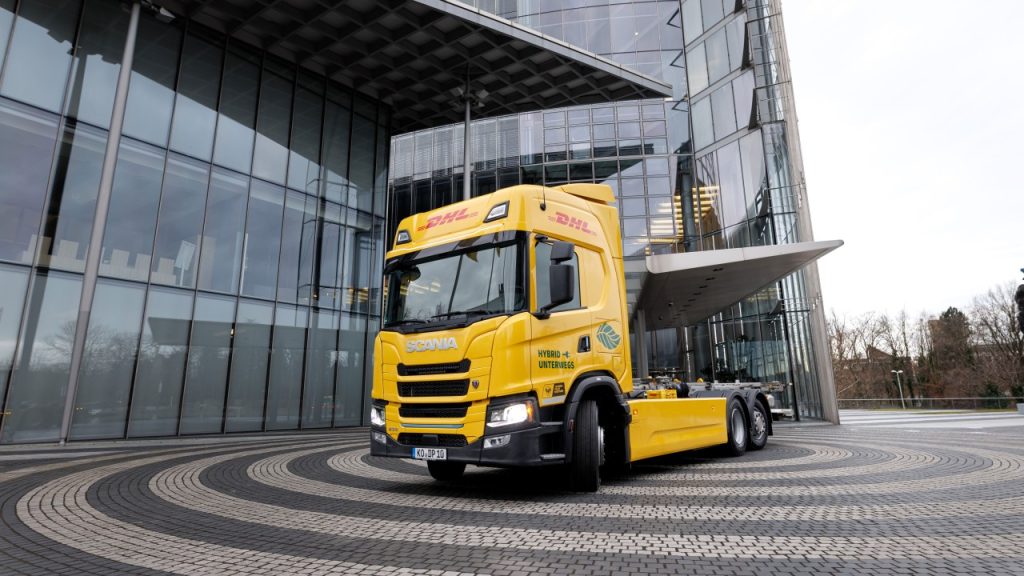90% electric operation: DHL’s new Extended Range Electric Vehicle (EREV) ran in electric mode for over 90% of its 22,000 km trial.
Massive emissions cut: The pilot saved nearly 16 metric tons of CO₂e—over 90% lower than a traditional diesel truck.
Operational flexibility unlocked: The integrated backup generator ensures reliability even when charging infrastructure is limited.
DHL Group has unveiled a promising new emissions-cutting tool in its decarbonization strategy: the Extended Range Electric Vehicle (EREV), built in collaboration with Scania. Tested over 100 days between Berlin and Hamburg, the electric truck—with a built-in fuel-powered generator for battery recharging—delivered substantial carbon savings without compromising delivery performance.
“We need pragmatic solutions like the EREV and quick political decisions to enable such bridging technologies,” said DHL CEO Tobias Meyer. “We want to decarbonize the transport sector now, and regulation should not hinder but support us to do so.”

The EREV traveled nearly 22,000 kilometers, operating in electric mode more than 90% of the time. The range extender was only activated for 8.1% of the journey, primarily in areas without charging access, reinforcing the vehicle’s role as a practical transition solution—not just a conceptual innovation.
RELATED ARTICLE: DHL Leads Sustainable Transport with Hydrogen Trucks in Germany
This hybrid-electric model differs significantly from conventional hybrids: the fuel-powered generator doesn’t power the drivetrain directly, but rather recharges the battery. That allows the vehicle to stay electric-first while ensuring uninterrupted service.
DHL’s data shows the vehicle cut CO₂ emissions by over 90%—equivalent to nearly 16 metric tons—compared to a diesel counterpart. The results signal a potential leap forward in logistics sustainability without the wait for full infrastructure rollout.
The company’s message to regulators and investors is clear: support for scalable, near-term technologies like EREV is critical for decarbonizing logistics at pace.
Read the press release here.
Follow ESG News on LinkedIn

